It kind of looks like magic out there when you watch your sprinkler system at work — water comes out of the ground in perfect arcs and sprays, watering your lawn, flowers, plants, and trees so they stay alive.
But it’s more hard work and calculated decisions than magic. And a key part of it all is your sprinkler heads, perfectly placed and planned so every inch of your thirsty landscaping gets the water it needs, without waste.
How do lawn sprinkler heads work? What are the best sprinkler heads for each part of your yard?
Let’s take a look.
First, How Do Lawn Sprinkler Heads Work?
The most common style of sprinkler head is the pop-up head, and it’s pretty cool how they work.
When they’re turned off, they hang out below the ground, out of sight, so they don’t look unsightly in your yard or trip the UPS guy.
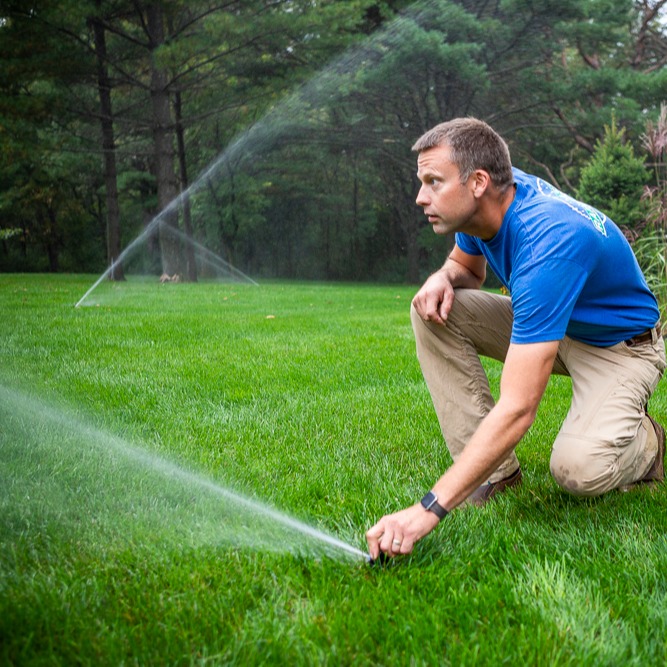
When your irrigation system turns on, part of the head pops up above the lawn surface and sprays water.
Standard height for sprinkler heads is four inches, but they come as high as 12 inches to reach taller grasses or plants.
Each sprinkler head has a nozzle that determines how far it will spray.
The Main Types of Lawn Sprinkler Heads
There are two main types of sprinkler heads, with variations of each to water in specific ways:
1. Spray Heads
Spray sprinkler heads are designed to reach smaller areas of lawn, covering 5, 10, or 15 feet.
Spray heads are typically stationary, spraying water in a specific pattern, depending on what type of nozzle is attached.
If you have an older irrigation system, you might have old-school spray heads that look like little umbrellas and spray out a lot of water. Too much water.
Newer spray heads look more like little fingers than umbrellas and put out less water, making them way more efficient. We always recommend upgrading to these more efficient sprinkler heads.
2. Rotary Sprinkler Heads
Rotary sprinkler heads spray the farthest and are meant for larger, open areas. One rotary sprinkler head can cover 30 feet or more.
Once your sprinkler system turns on and the rotary head pops up, it rotates side to side, rotating from a narrow 30 degrees, up to a full 360 degrees, adjusted to perfectly cover every inch of your lawn.
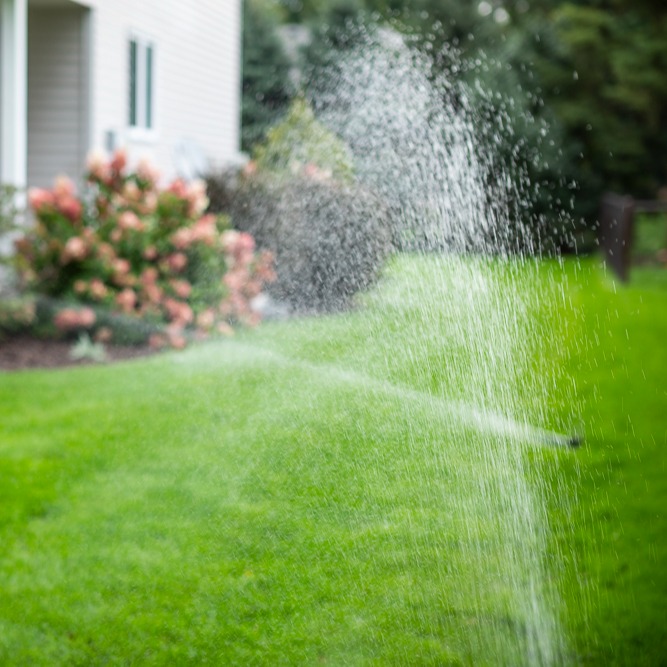
Because rotary sprinkler heads can spray far, homeowners with small yards often think they’ll just need a couple of these heads to cover their yard, and it won’t cost much to install their irrigation system. Fewer heads, less money — woo hoo!
Not so fast. Actually, it often costs more for a sprinkler system for a smaller yard.
Why? A smaller yard needs more spray heads, designed to cover smaller areas, to adequately reach every inch of your yard and landscaping.
Think about that small strip of grass between your sidewalk and the street. If you install a far-reaching rotary sprinkler head there, it will shoot water out into the street. Instead, you need several spray heads that don’t spray as far.
More sprinkler heads add up to more expense.
3. Drip Irrigation
Drip irrigation doesn’t involve a sprinkler head, exactly, but it’s the third main type of irrigation so it’s worth including here.
Unlike a typical sprinkler system that sprays water from irrigation heads, drip irrigation uses hoses pierced with tiny holes that allow small amounts of water to trickle slowly into the soil.
Drip irrigation uses less water than typical sprinkler systems because it goes directly to the plants. There’s no water waste from evaporation because water isn’t spraying into the air.
It’s great for very narrow spots where even a spray head sprays too far. Drip lines can be installed in planters on your porch or patio, too, to make watering those plants easier.
Drip irrigation can be good for garden beds, but not if you plan to regularly till the soil. The tilling will tear up those lines that run just beneath the soil.
Are the Best Sprinkler Heads Stainless or Plastic?
People typically assume stainless steel sprinkler heads are better than plastic.
Here’s a pro tip: stainless isn’t better. The internal components are no different between plastic and stainless.
Types of Lawn Sprinkler Heads: Avoid Common Mistakes
Homeowners who install their own sprinkler systems often install the wrong sprinkler heads, causing big problems in their lawn.
If you install a spray head in an area that really needs a rotary sprinkler head, water won’t reach all areas of your lawn, and you’ll have brown spots.
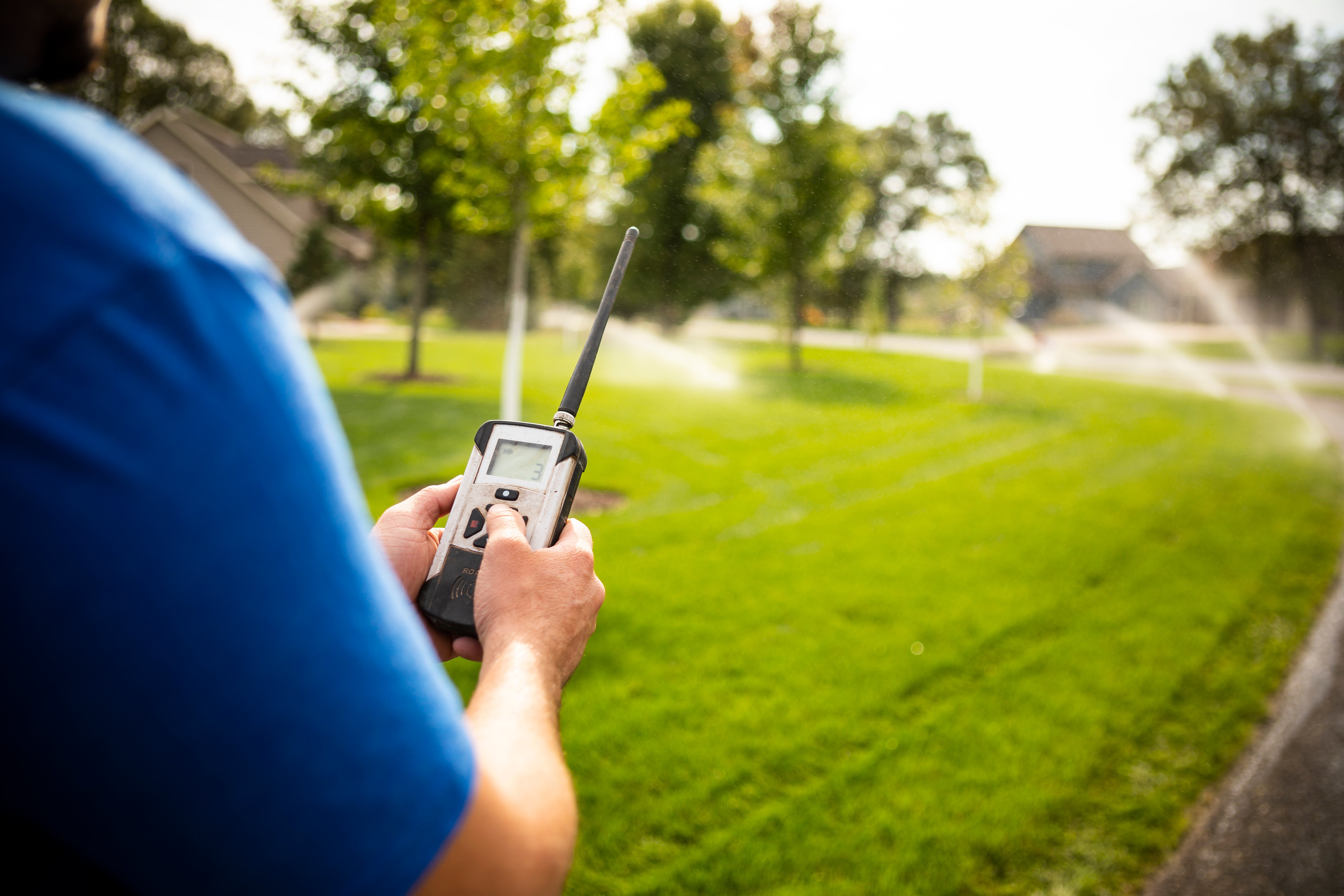
Too much water is just as bad, creating soggy flooded areas that will die.
Water pressure is a factor here, too. If you install five sprinkler heads in an area that only needs four, there might not be enough pressure to make them all spray far enough— or even pop up out of the ground.
A homeowner might pick the wrong nozzle that limits how much water sprays out. Proper adjustment is crucial, too, figuring out how far each sprinkler head needs to spray and how much it should rotate.
Each sprinkler head has to be precisely adjusted so it sprays exactly where the water needs to go, without overspray that wastes water and hits your driveway or the side of your house.
When it comes to these adjustments, every sprinkler brand is different. Some require tools, others don’t.
When you change your landscaping, you’ll probably have to adjust, move, or add sprinkler heads.
Your best bet to make sure you have the right types of sprinkler heads for every part of your landscaping is to hire an experienced pro.
Keep Sprinkler Heads Working with Regular Tune-Ups
Your sprinkler heads work hard out there. Stuff happens.
Frost can cause the ground to heave and nudge your sprinkler heads out of whack. That means they might spray your driveway instead of your lawn.
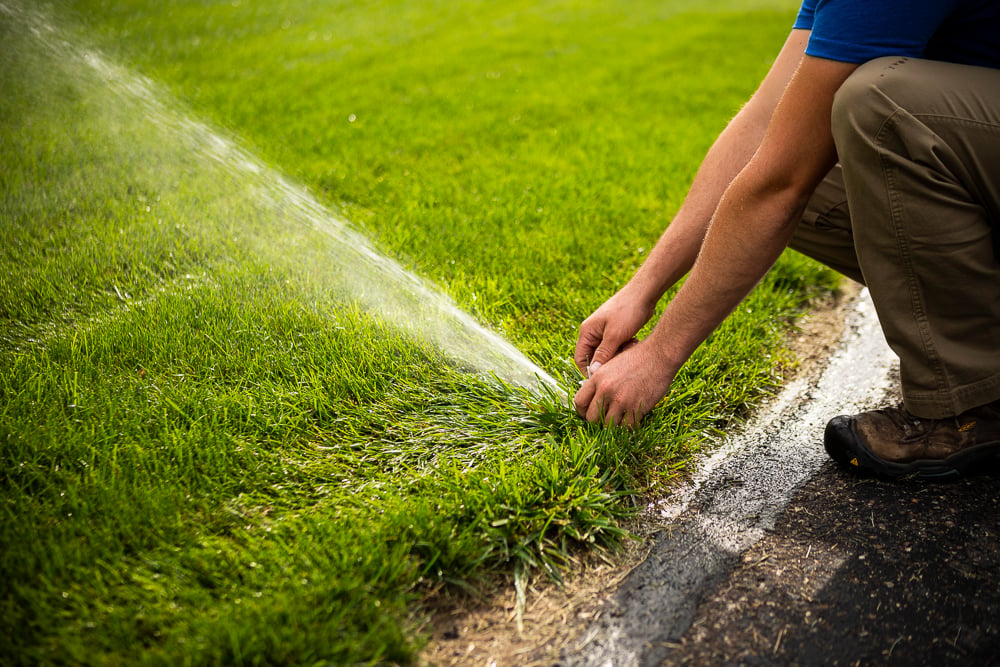
Heads could be leaking. Residue in the line can flow to the heads, clogging them.
Invest in a sprinkler system maintenance plan and you’ll have peace of mind that a skilled irrigation specialist will discover any issues before you waste a bunch of water.
Get the Best Sprinkler Heads for Your Lawn: Trust RainMaster
Installing the right types of sprinkler heads is super important.
Make sure the irrigation company you choose includes expert design in your installation cost. Not every company that installs lawn sprinklers and irrigation in Minneapolis, MN & Eau Claire, WI offers it.
You may not realize your installer doesn’t really know what they’re doing until it’s too late — when some of your irrigation heads are barely spraying water or spraying all over the place.
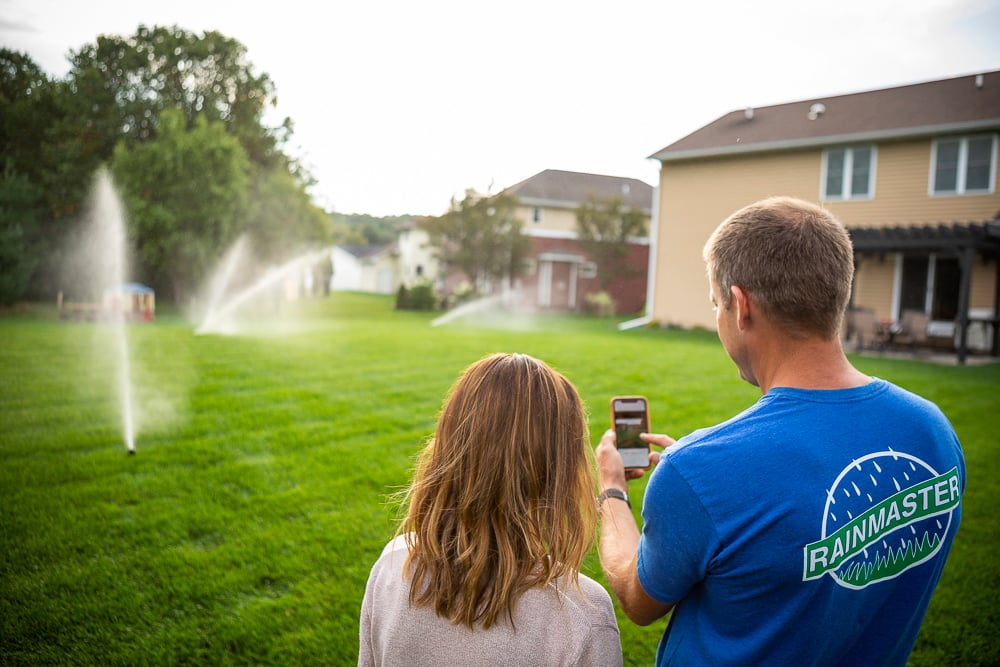
Shoddy design can mean you waste hundreds to thousands of gallons of water each year. That’s a lot of water, and a lot of money, wasted. Not to mention, it’s not helping the health of your lawn.
At RainMaster, our team includes trained and certified irrigation designers with the skill and experience to plan just the right types of sprinkler heads for your lawn and landscaping.
When you’re ready to put your trust in us, we can’t wait to meet you — and help you make the best choice for your lawn.
Ready to make your lawn life easier? Request a quote today! We’ll review your options together so you can make a confident decision. Then, you can finally enjoy your well-watered lawn.



